(NADS) - Cultural industry is considered a breakthrough in the strategy of cultural development and human development of Vietnam, helping us promote cultural values and the strength of Vietnamese people, in order to realize the aspiration of bringing prosperity and happiness to the Vietnamese people, making culture truly the spiritual foundation of society, fulfilling its mission of "lighting the way for the nation".

To continue building, preserving, reviving and developing Vietnamese culture, speaking at the National Cultural Conference on November 24, 2021 in Hanoi , General Secretary Nguyen Phu Trong requested to focus on implementing 6 key tasks well, including the task of "building a digital cultural environment suitable for the digital economy , digital society and digital citizens, making culture adaptable, regulating the sustainable development of the country in the context of the fourth industrial revolution. Urgently develop cultural industries, build a healthy cultural market ". ( 1)
“Cultural industry” is a term used for industries that combine the creation, production and commercialization of creative content. These contents are essentially intangible cultural, protected by copyright law and expressed in the form of products or services. This term originates from new concepts such as creative industries, cultural industries, start-ups. Economist John Howkins (UK) initiated the concept of creative economy as a suggestion for using creative potential to create new products and services.


Cultural industries clearly demonstrate the trend of economic and cultural penetration, permeation and integration, a combination of key factors such as creativity, infrastructure and modern production technology. From there, cultural products that bring economic benefits can be produced. Cultural industries are the application of technological advances - information and business skills, using input materials such as creativity, cultural capital, intellectual capital, to create outputs of cultural products and services, meeting the increasingly strong and diverse needs of consumption and cultural enjoyment of the people.
Generally speaking, cultural industry is the process of applying scientific and technological achievements along with business skills, using creative capacity from cultural capital to create cultural products and services, meeting people's consumption and cultural enjoyment needs (2).
In 2005, the United Nations Educational, Scientific and Cultural Organization (UNESCO) adopted the Convention on the Protection and Promotion of the Diversity of Cultural Expressions. This Convention identifies countries as having sovereign rights over culture and encourages countries to develop policies and legal systems to protect and promote their cultural values. The Convention emphasizes the task of developing cultural industries as a tool to protect and promote diverse cultural expressions. This spirit has been responded to by member countries, and has created a movement to build cultural policies and laws, with special emphasis on policies related to development.
The term cultural industry appeared in the world since the 1930s, but it was not until the 2000s that the concept of cultural industries was mentioned more and became one of the development focuses of many countries in the world. Up to now, the cultural industry is no longer strange to some countries, it has become an important part of the economy and has made great contributions to the overall growth of the country. In many countries, the cultural industry has become a major income industry and exported to other countries to earn foreign currency. In developed countries, the cultural industry has brought in a large source of revenue for the gross domestic product (GDP). For example, in the UK, the cultural industry has generated an income of about 112.5 billion pounds/year, contributing 5% of GDP, accounting for 10-15% of the world's cultural industry market share. In Hong Kong (China), 85% of national income comes from entertainment, television and advertising services. In Japan, a country with a large cultural industry, typically writing stories, publishing stories, making souvenirs from these stories, making anime, and making games from these works... their average revenue has reached 2 billion USD/year. In Korea, a country that is not far behind Japan, music groups and movies are all brought to the world by the media. Therefore, these works are very popular in the world.

The products and services of each cultural industry have their own characteristics, but basically, cultural industries have the following main operating processes: creation, production, distribution of services and consumption of cultural products.
Our Party's viewpoint on developing cultural industry was formed in 1986, through documents of Party Congresses, documents of Central Executive Committee Conferences and was specifically affirmed in Central Resolution 05/NQ-TW, Session VIII, on building an advanced Vietnamese culture imbued with national identity. Resolution No. 33-NQ/TW dated June 9, 2014 of the 9th Conference of the 11th Party Central Committee on building and developing Vietnamese culture and people to meet the requirements of sustainable national development, the Resolution has determined: “Developing cultural industries to exploit and promote the potentials and unique values of Vietnamese culture; encouraging the export of cultural products, contributing to promoting Vietnamese culture to the world. Having mechanisms to encourage investment in facilities, technical equipment and advanced technology to improve the quality of cultural products. Creating favorable conditions for cultural, artistic, sports and tourism enterprises to attract social resources for development. Innovating and perfecting institutions, creating a favorable legal environment for building and developing the cultural market and cultural industry ” (3). It can be said that Resolution No. 33-NQ/TW dated June 9, 2014 of the 9th Conference of the 11th Party Central Committee demonstrated the development of the Party's theoretical thinking on the role of culture when affirming the necessity of building a cultural industry in Vietnam.
Decision No. 1755/QD-TTg dated September 8, 2016 on the “Strategy for the development of cultural industries to 2020, vision to 2030” of the Government affirmed that cultural industries are an important component of the national economy. The State creates favorable conditions to attract maximum resources from enterprises and society to develop cultural industries. Specifying 12 fields: Advertising; Architecture; Software and entertainment games; Handicrafts; Design; Cinema; Publishing; Fashion; Performing arts; Fine arts, Photography and Exhibitions; Cultural tourism are industries in the field of cultural industries.
The strategy for developing cultural industries to 2020, with a vision to 2030" has highlighted four development perspectives: First , cultural industries are an important component of the national economy. The State creates favorable conditions to attract maximum resources from businesses and society to develop cultural industries; Second, developing cultural industries based on creativity, science and technology and intellectual property; maximizing the economic factors of cultural values; Third , developing cultural industries with a focus, key points, and a roadmap towards professionalism and modernity, promoting Vietnam's advantages, in accordance with the basic rules of the market economy; placed in the overall socio-economic development, ensuring unity and synchronization between industries, stages of creation, production, distribution, dissemination and consumption; Fourth , developing cultural industries associated with promotion promote the image of the country and people of Vietnam, contributing to protecting and promoting national cultural identity in the process of international exchange, integration and cooperation.
The Resolution of the 13th National Party Congress emphasized: " Urgently and centrally deploy the development of the cultural industry and cultural services on the basis of identifying and promoting the soft power of Vietnamese culture, effectively applying new values and achievements of culture, science, engineering and technology of the world " (4). In particular, the speech of General Secretary Nguyen Phu Trong at the National Cultural Conference on November 24, 2021 really opened up the development of a new industry, the cultural industry in our country.
In Vietnam, the cultural industry is considered a breakthrough in cultural development, in the development of Vietnamese people, helping us to promote the cultural values and strength of Vietnamese people to realize the aspiration to develop a prosperous and happy Vietnam, so that culture is truly the spiritual foundation of society, "culture lights the way for the nation to go" (5). In the current innovation process, especially in the context of the fourth industrial revolution (4.0), it entails and forces the Vietnamese economy to develop according to the trend of the times, which is international integration, gradually forming a knowledge-based economy. This is an irreversible trend, requiring us to recognize and have appropriate policies, good organization, and compliance with the law to promote economic development, in which, we need to pay special attention to policies to promote cultural industries. Considering this as a creative factor - the greatest resource for national development, is a major trend that is completely consistent with the development of the world economy. Creative economic sectors and cultural industries have become the driving force for world economic development. When culture is concerned, cultural creation will have higher value. When cultural works have high value, it will promote the development of cultural industries, become the spearhead of the national economy, and promote GDP growth.
Culture is the spiritual foundation of society, so the cultural industry has the ability to strongly influence the thoughts, emotions, ethics and lifestyles of consumers. The cultural industry plays an important role in meeting the needs of the people and developing the culture of each country; at the same time, it is also an effective channel to spread the cultural messages of each country to the international community. The Resolution of the 9th Conference (11th Central Executive Committee of the Party) has identified the task of developing the cultural industry in parallel with building and perfecting the cultural market. The Resolution of the 12th National Congress once again emphasized this important task, considering it an extremely important issue and identified as one of the breakthroughs in building and developing Vietnamese culture and people to meet the requirements of sustainable national development.
Compared to other countries, the development of cultural industry in Vietnam is still new, but we have a lot of potential and advantages to develop cultural industries. Cultural industries include fields that use creative talent, cultural potential combined with technology and business skills to create cultural products and services. That means, to form a cultural industry, we must have a synchronous and professional connection between creative components, exploiting the cultural values of the nation, combined with the use of advanced technology and business skills.
Our advantage is that the Vietnamese people are always industrious, creative and talented, which has been proven in many fields. With a long history, through thousands of years of struggle to build and defend the country of the Vietnamese people, in that process, our country has created a huge treasure of relics, rituals, festivals, folk games, traditional crafts, folk songs, folk dances, cuisine, customs, legends, heroic images... besides, it also possesses countless typical intangible cultural heritages (quan ho, ca tru, hat xoan, cai luong, tuong, cheo, vi giam...). Along with that is the community of 54 ethnic groups living on the S-shaped strip of land, each with its own identity, solidarity, creativity, has blended and created a diverse and rich Vietnamese culture. All can become great materials for creativity, creating cultural and artistic products that both honor national culture and create differences and unique values for cultural and artistic products. In the localities of Vietnam, there are lands rich in cultural resources. Each region has its own identity and historical story. The problem is how to turn those cultural assets into cultural products, tourism products to attract tourists and bring economic value. From these potentials and advantages, if we know how to take advantage of the development of science and technology, especially the 4.0 industrial revolution, Vietnam will certainly successfully build cultural industries.
Developing cultural industries will help Vietnam restructure its growth model, create highly competitive cultural products and services, create more stable jobs, and make positive contributions to the economy. This is also a strategy to build an advanced Vietnamese culture imbued with national identity in the context of transition to a socialist-oriented market economy. The abundance of Vietnamese cultural goods and services in the domestic and international markets is an important cultural soft power of the country, making culture permeate people's lives, as well as bringing Vietnamese culture to the world, promoting internal strength, and promoting the country. In the era of knowledge economy and information technology, cultural industries have the ability to turn culture into an important part of international trade and competition, helping Vietnam build a creative, prosperous, confident and unique economy. Therefore, it is time for Vietnam to join the trend of the times, rising to take the position of a country with developed cultural industries.
In practice, in our country, a number of markets for cultural products and services have long been formed such as: cinema, performing arts, books, paintings, handicrafts... In parallel with the domestic market, the export market share of Vietnam's cultural goods to the world has also achieved good results with many quality products. It is undeniable that there are development marks of a number of markets for cultural industrial products and services, but it is also necessary to acknowledge the fact that Vietnam's cultural industrial products are not diverse, not rich, not attractive, lacking in uniqueness, so they have not met the increasingly high tastes and aesthetics of domestic and foreign consumers. In addition, many products have not optimally exploited the uniqueness of indigenous culture, it is difficult to shape a national brand, so their competitiveness is not high, and they face many obstacles when accessing international markets. Although we have made certain efforts and achieved certain successes, we have not yet met the expectations of those who love art and culture, as well as the desire to exploit cultural values for sustainable development.
In recent years, especially since Decision No. 1755/QD-TTg, dated September 8, 2016 of the Government on the "Strategy for the development of cultural industries to 2020, vision to 2030", along with positive changes in policy mechanisms, have contributed to promoting the Vietnamese cultural industry market to make new progress, contributing positively to the country's GDP growth. According to the report of the Ministry of Culture, Sports and Tourism, after 5 years of implementing the "Strategy for the development of cultural industries to 2020, vision to 2030", 12 cultural industries have achieved certain achievements, as of 2018, 12 cultural industries contributed revenue of about 8.081 billion USD, equivalent to 3.61% of GDP. Developing cultural industries is becoming a trend and is identified as an important, sustainable part, attracting resources, labor, jobs, and promoting competitive advantages. Synthesizing data from the General Statistics Office, the 2016-2019 Periodic Report of the UNESCO Convention and the Vietnam National Institute of Culture and Arts, some results of developing Vietnam's cultural industries are as follows: The annual GDP growth rate reached an average of 6.81% from 2016 to 2019. GDP per capita: 2,786 USD, belonging to the low-income group; GDP contribution of cultural industries: 2.44% of GDP (2010); 3.5% of GDP (2015); 3.61% of GDP (2018) (equivalent to 8,081 billion USD) The rate of workers working in the cultural sector: 1.72% (2009); 3.45% (2015); 3.5% (2018); 5.0% (2019); Number of cultural enterprises in 2019 is 97,167 enterprises; Non-public cultural and creative spaces: 40 spaces (2017); 195 spaces (2021); The whole country currently has: 115 public cultural and artistic units (12 at the central level and 103 at the local level); 108 training establishments participating in cultural and artistic training; Export of cultural products: 2019: 2,494,075,077.00 (USD; Annual growth rate of import and export of creative goods 2003-2015: 17.9%; Export value of creative goods in Vietnam: 2015: 837,014.65 million USD.
On December 22, 2023, at the National Conference on the Development of Vietnam's Cultural Industries, the Prime Minister concluded 6 issues: First , there has been a general consensus in the Party's guidelines and policies, the State's policies and laws, reflected in resolutions, strategies, and directive documents, thereby raising the general awareness in society about the development of cultural industries. Second, mechanisms, policies and laws related to cultural industries have been supplemented and improved to suit the new situation and context. From 2018 to present, the Government has submitted to the National Assembly for approval the amendment and supplementation of 4 laws (Law on Cinema (2022); Law on amending and supplementing a number of articles of the Law on Intellectual Property (2022); Law on amending and supplementing a number of articles of the Law on Construction (2020); Law on Architecture (2019) and issued 4 decrees related to the cultural industry (Decree No. 17/2023/ND-CP dated April 26, 2023 detailing a number of articles and measures to implement the Law on Intellectual Property; Decree No. 70/2021/ND-CP dated July 20, 2021 detailing the implementation of a number of articles of the Law on Advertising; Decree No. 144/2020/ND-CP dated December 14, 2020 regulating performing arts activities; Decree No. 23/2019/ND-CP dated 26/02/2019 regulations on exhibition activities). The cultural development strategy to 2030 has set a target of striving for the added value of cultural industries to contribute 7% of GDP. Third, the cultural industry actively contributes to the country's overall socio-economic development achievements. The contribution of the cultural industry in 2021 reached 3.92% of GDP; in 2022 it increased to 4.04% of GDP. Cultural industry products in various fields (music, painting, literature, theater, cinema, etc.) are increasingly diverse and rich, meeting the needs of the public better and better, many of which are of high value, creating resonance domestically and internationally. Many cultural heritages are effectively exploited; many Vietnamese singers have achieved hundreds of millions of views on YouTube or are loved on other digital platforms at home and abroad. Fourth, more and more businesses and workers are participating in the development of the cultural industry. cultural industry. In the period of 2018 - 2022, the number of economic establishments operating in cultural industries increased quite high, at 7.2%/year (currently there are over 70,000 economic establishments). The labor force in cultural industries increased quite rapidly at 7.4%/year (currently attracting about 2.3 million workers, accounting for 4.42% of the total labor force of the entire economy). Fifth, the model of organizing human resource training for the development of cultural industries has been gradually perfected in a suitable, professional, and systematic direction, especially for young talents in the field of culture and arts. Sixth, building a network of connections, promoting the application of science and technology, and digital transformation in the cultural industry has been focused on, achieving initial results. The network of connections, connecting cultural centers and creative spaces in the country and internationally has gradually been completed. The database of cultural and historical relics, theaters, and centers Performing arts centers, film screenings, and museums are being built vigorously, creating an important foundation for building a comprehensive database on cultural tourism in particular and the cultural industry in general.
However, the cultural industry has not yet developed commensurate with the country's distinct potential, outstanding opportunities, and competitive advantages. In the coming time, to promote and develop the cultural industry, the Prime Minister also requested to focus on 6 issues: First , the development of the cultural industry must closely follow the Party's guidelines and policies and the State's policies and laws on culture, especially the Platform for national construction in the transitional period, thematic resolutions, the Resolutions of the 12th and 13th National Congresses of the Party, the Outline of Vietnamese culture (1943), and the speech of General Secretary Nguyen Phu Trong at the National Cultural Conference. Second , the development of the cultural industry must make an important contribution to building an advanced Vietnamese culture, imbued with national identity, unified in diversity; must be placed in the overall socio-economic development, connecting creative, cultural and artistic activities with production and business, ensuring unity, synchronization and harmony, based on innovation, science and technology and protection of intellectual property rights. Cultural industry must have equal access to other industries in terms of access to capital, land, taxes and other incentives. Third , develop cultural industry with a focus and key points in the direction of professionalism, modernity, dynamism, creativity, high competitiveness, while diversifying and linking many sectors and fields; in accordance with the basic laws of the market economy and the trend of the times. Fourth, developing cultural industry must be associated with promoting and spreading the image of the country and Vietnamese people, contributing to preserving and promoting national cultural identity in the process of international exchange and integration, meeting the goal of sustainable national development. Cultural development must be associated with tourism development. Fifth , cultural industrial products and services must ensure that they meet the factors of "Creativity - Identity - Uniqueness - Professionalism - Healthiness - Competitiveness - Sustainability", on the basis of "Nationality - Science - Mass" according to the Outline of Vietnamese Culture (1943), gradually building a brand for products and services of national stature, participating in the global value chain. Sixth , the implementation of tasks and solutions must be synchronous, drastic, persistent, focused, and key, focusing on breakthrough policies to transform "potential" cultural resources into highly competitive cultural products and services.
Directing the key tasks and solutions in the coming time, the Prime Minister requested all levels, sectors, localities, agencies and organizations to be more determined, make greater efforts, act more resolutely, effectively, and with more focus; proactively, closely coordinate, and concentrate on implementing tasks and solutions to strongly develop cultural industries, encourage all exploration and creativity, and respect creative freedom; focus on industries with great potential and advantages (such as cinema, performing arts, cultural tourism, handicrafts, design, software and entertainment games), so that by 2030 the added value of cultural industries will contribute highly to GDP.
The development of the cultural industry into a spearhead in the national economy is a completely correct perception of our Party and is specifically expressed in the documents of the Party Congress and thematic resolutions. The direction of the Government is extremely drastic and completely in the right direction. Although there are many potential advantages, in the process of mobilizing and developing the cultural industry, it is facing many difficulties and challenges. The first difficulty must be mentioned in the awareness and concept of society, including those working in the cultural field. Many people think that culture is only performing arts activities, simply literature and art, but do not fully perceive that culture is the sum of social issues. In particular, there is little access to the cultural industry, and there is no awareness of the position and role of the cultural industry in the development of the country; The cultural sector as well as the whole country has gone through a long period of subsidy, so from organizations and state agencies as well as individual artists are lacking dynamism, indifferent to the market economy. Therefore, to develop cultural industries, organizations and state agencies need to have more comprehensive innovation to have a positive approach to the market, in accordance with the spirit of the new Government towards creation, entrepreneurship, creating conditions for businesses to develop; The lack of education in creative and entrepreneurial skills is another major challenge to the development of cultural industries in Vietnam. Our country has many talents in many fields of cultural industries, but lacks conditions for talent to develop, is weak in the way of approaching the market, and has great limitations in commercial competition; Lack of connection between cultural industries. Lack of appropriate mechanisms for the success of cultural industries.
In order for Vietnam's cultural industries to develop and achieve the goal set out in the Strategy to 2030, contributing 7% of GDP, in the coming time, it is necessary to pay attention to implementing the following points: First , continue to perfect the cultural industry institution in the socialist-oriented market economy. In particular, focus on perfecting policies to promote the development and effective exploitation of Vietnam's cultural resources (cultural resources are expressed in areas such as art, design, entertainment, cultural assets, lifestyle (food, accommodation, clothing, etc.); training and talent attraction policies; public-private partnership policies. Second, select and develop industries that are labor-intensive based on knowledge, creating jobs and high incomes. Third , develop the cultural industry market, promote inter-sectoral; expand international cooperation to access the world's development achievements. Fourth , maximize the advantages of the 4th industrial revolution to develop cultural industry infrastructure, increase public access, promote production and consumption. Fifth , focus investment resources on a number of Vietnam's creative industry centers, have separate policies for these centers to attract creative talents. create cultural industry and more convenient management.
As an artist working in the arts, I am very excited and have absolute confidence in the leadership of the Party. With the Party's viewpoint and correct guidelines, and the State's strict management, the cultural industry will certainly develop and become a spearhead in the national economy./.
Source: https://nhiepanhdoisong.vn/ban-ve-phat-trien-cac-nganh-cong-nghiep-van-hoa-o-viet-nam-15042.html


![[Photo] Party and State leaders attend the special art program "You are Ho Chi Minh"](https://vphoto.vietnam.vn/thumb/1200x675/vietnam/resource/IMAGE/2025/5/18/6895913f94fd4c51aa4564ab14c3f250)

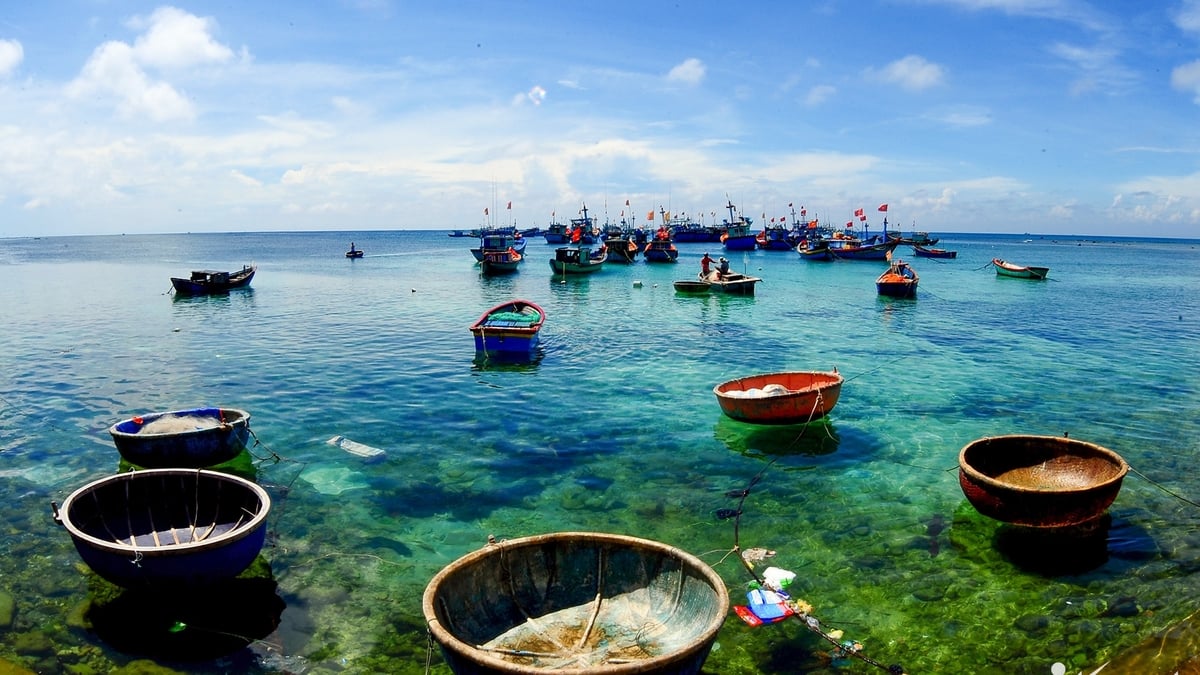
![[Photo] Party and State leaders visit President Ho Chi Minh's Mausoleum](https://vphoto.vietnam.vn/thumb/1200x675/vietnam/resource/IMAGE/2025/5/19/d7e02f242af84752902b22a7208674ac)
![[Photo] Special flag-raising ceremony to celebrate the 135th birthday of President Ho Chi Minh](https://vphoto.vietnam.vn/thumb/1200x675/vietnam/resource/IMAGE/2025/5/19/1c5ec80249cc4ef3a5226e366e7e58f1)





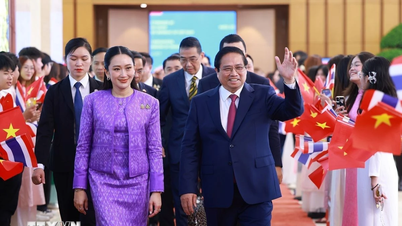

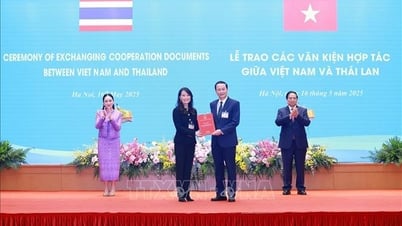



![[Video] Uncle Ho promotes sense of responsibility](https://vphoto.vietnam.vn/thumb/402x226/vietnam/resource/IMAGE/2025/5/19/02e981b562be43978d802d1d548d98e4)



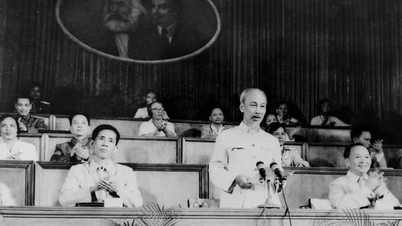

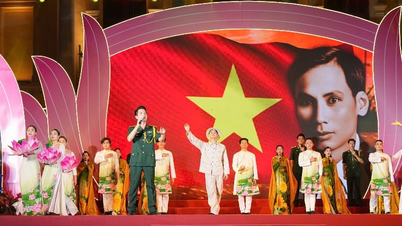







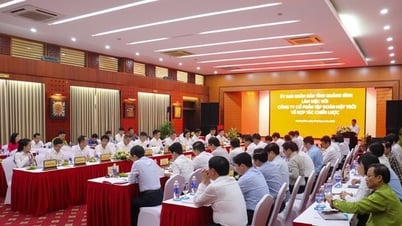
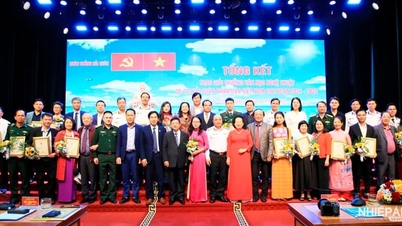


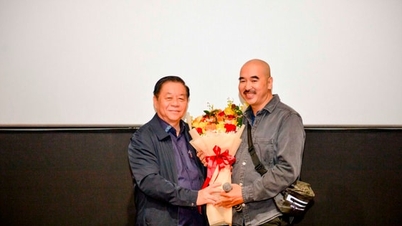
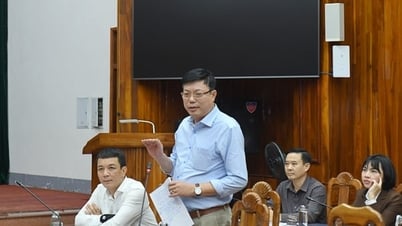
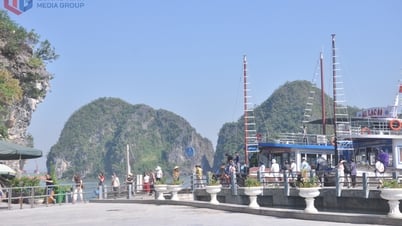



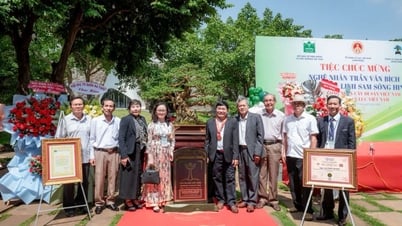












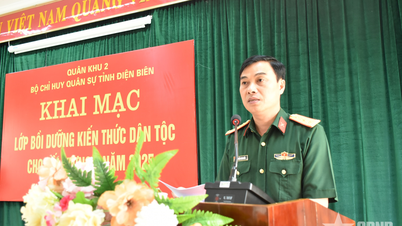



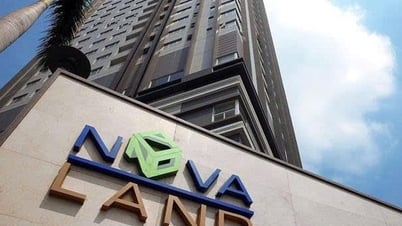




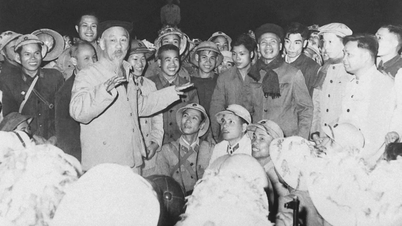
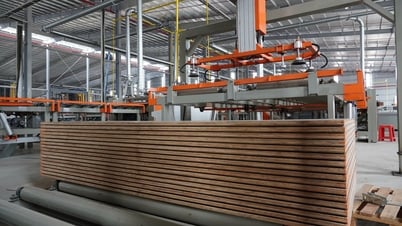





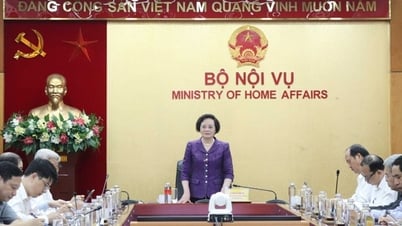


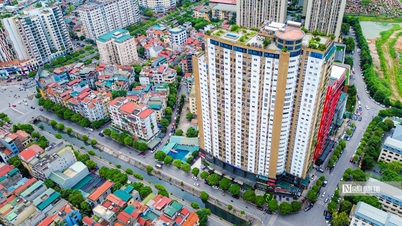


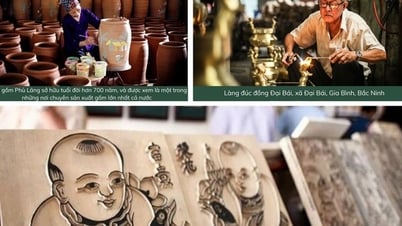
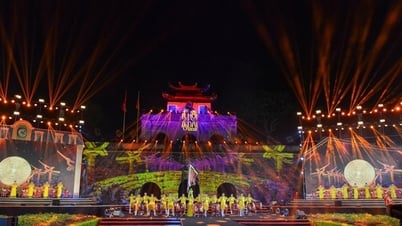


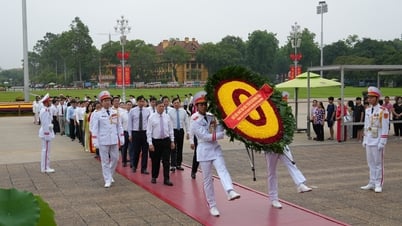

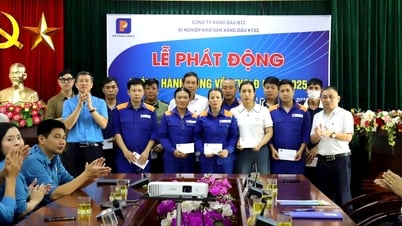







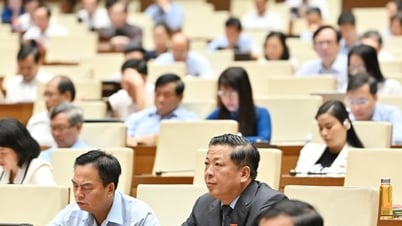










Comment (0)